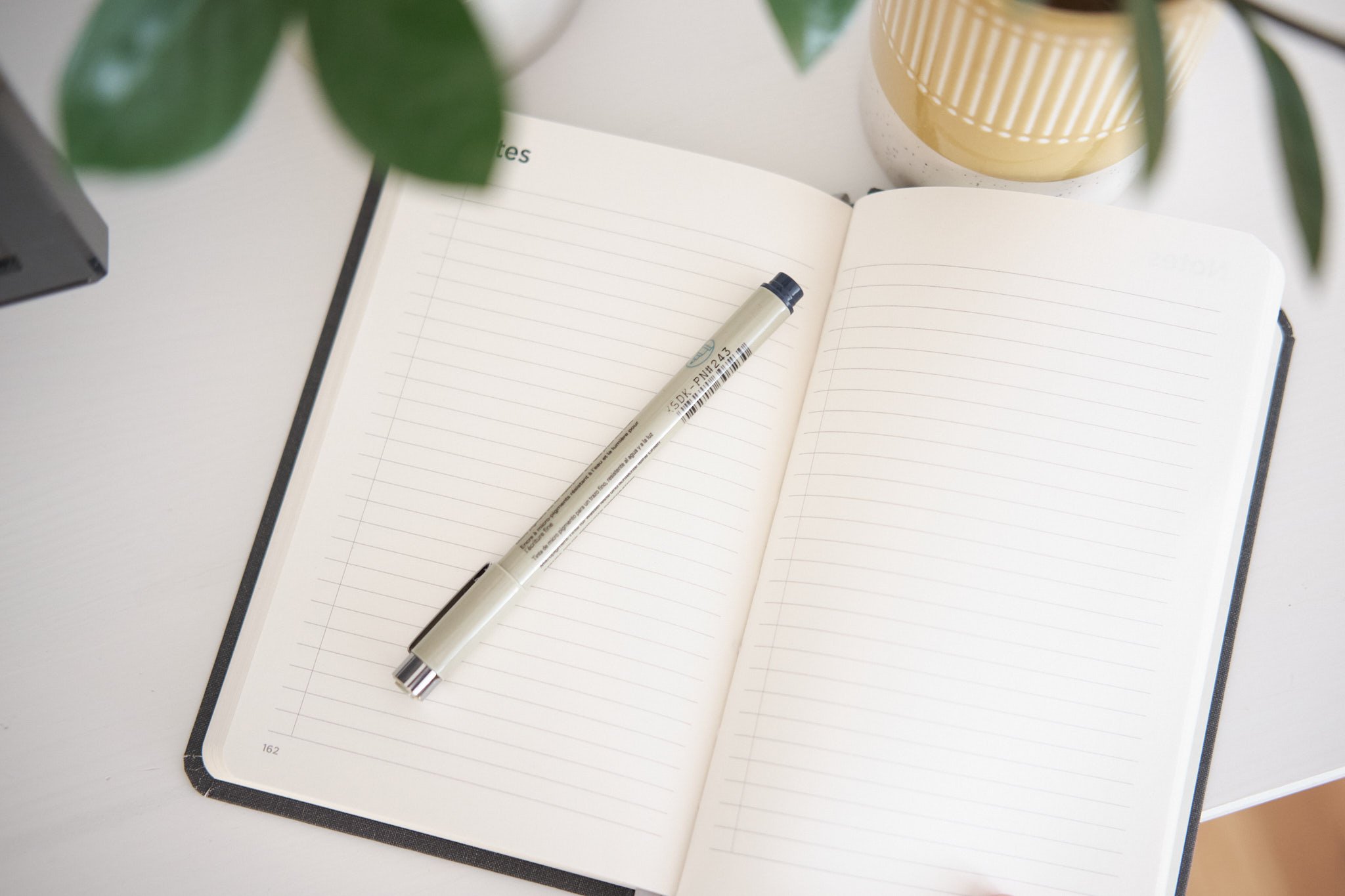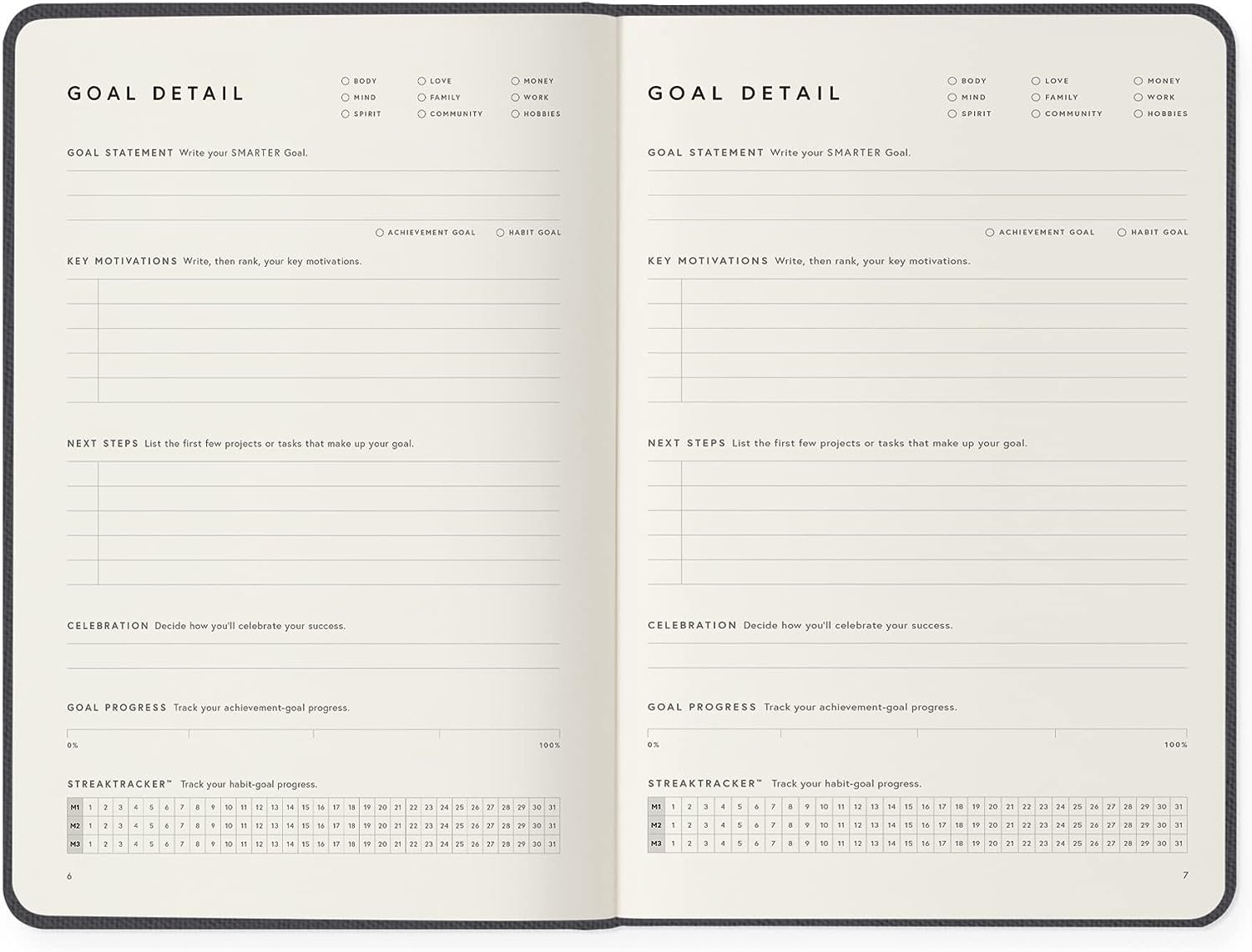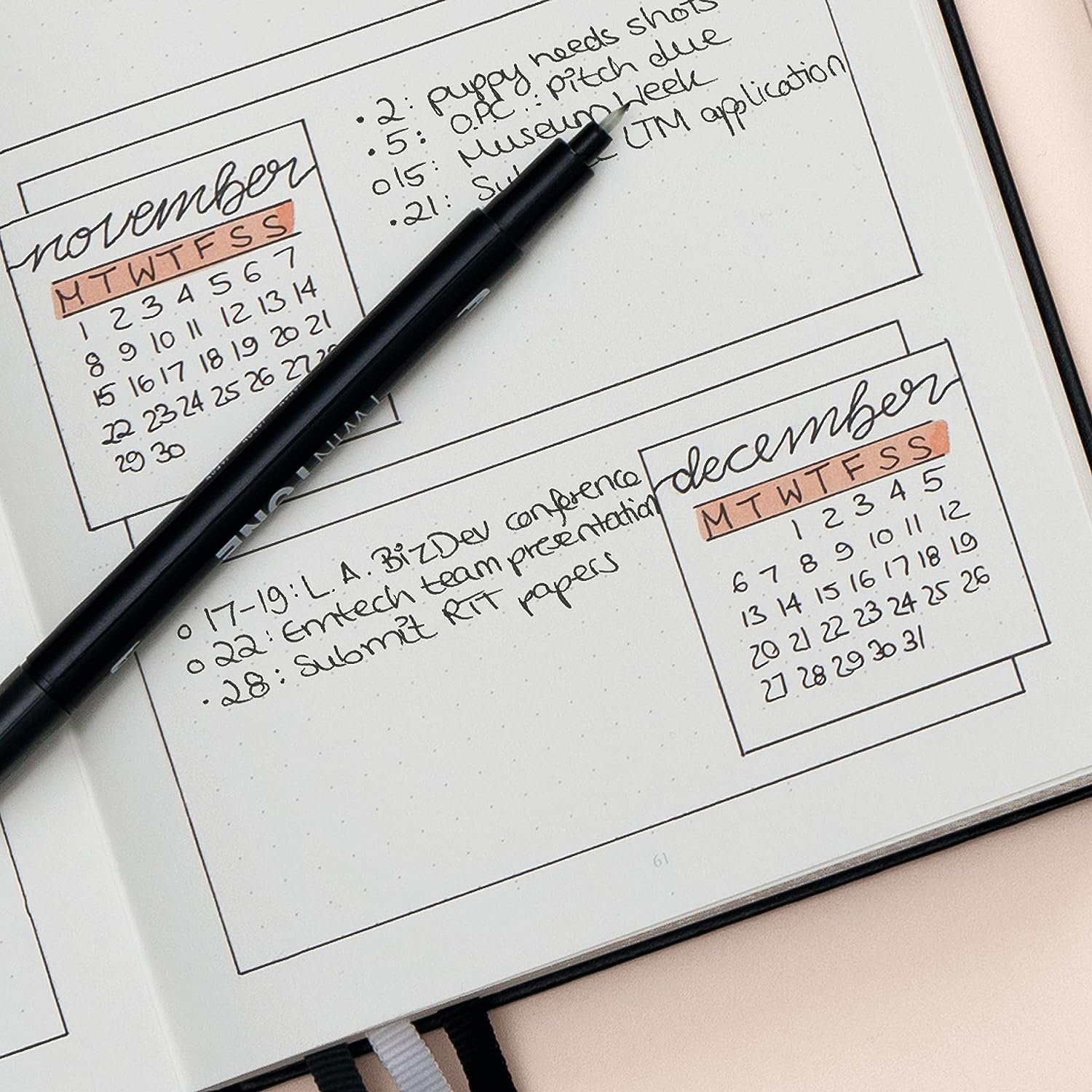Best 2024 Paper Planners for Entrepreneurs & Photographers
If you’re not currently using a paper planner for your life and business, I urge you to seriously consider investing in one for 2024. I use a planning framework that utilizes quick digital note taking, shared online calendars with automatic booking for clients, and yes, the very important paper planner, as a way to organize and plan my days. I don’t see a paper planner as optional and find that it’s the best way to synthesize tasks. When we use our hand to write something down, it creates specific brain chemistry to help us focus and remember. As an artist, I also find that the tactile act of writing allows me to tap into the creative part of my mind and also makes it much quicker to see what tasks I have for the day, what’s complete, and what I still have to do. If you’re relying on your phone or computer to keep track of things, you’re potentially making things more difficult for yourself as our devices are essentially created to distract us - a paper planner doesn’t have that problem.
One thing to note when it comes to a physical paper planner is that you don’t have to be afraid to cross things out, move them to the next day, and essentially change your mind whenever you want. I feel like a lot of us think that once we write something down we absolutely have to do that thing, and nobody wants that sort of pressure. So here is your permission to use a paper planner to actually plan, to be untidy, and to allow it to be a tool you use instead of worry about doing everything perfectly.
In this Blog post, I have 3 paper planner recommendations for 2024 that are all amazing choices if you’re a photographer, small business owner, entrepreneur, solopreneur, or even a busy parent with a side hustle who needs a bit more order in their life!
*Please note that this post may contain affiliate links, which means that I may receive a commission if you make a purchase using these links. As an Amazon Associate I earn from qualifying purchases.
Full Focus Planner
I have been using the Full Focus Planner for about 3 years now. After reading Free to Focus by Michael Hyatt, I redefined how I structured my to-do list and invested in this planner to help me keep organized every day as well as plan out my annual and quarterly goals. The concept of the book and the planner is pretty simple, you define your goals and focus on the 3 most important things every week, which then trickle down to the 3 most important things every day. This way you’re not overwhelmed by all the to-do items (don’t worry, there’s still space for those) and are able to make progress on your bigger achievements. This is a high quality and beautifully designed planner that I’ve really enjoyed using and would highly recommend to any entrepreneur or photographer who wants to optimize and keep track of everything they need to do on a daily basis. People will often use the bigger planner as a journal or a diary because it offers a 2-page spread for each day. Personally I prefer the smaller pocket version as I don’t need/want that much space and like the more portable size better.
Each page in the Full Focus Planner is built on Michael Hyatt’s proven Full Focus System—the goal achievement framework that’s helped over 200,000 achievers accomplish more in less time.
And it’s not limited to professional goals. Planner features include Life Domains, Self-Care Planner, and Daily Rituals to keep you focused on what matters in all areas of life.
6" x 9" or 4.5" x 7" dimensions
Linen hardcover with elastic band
Three month undated planner
Ribbon(s) to mark your place
Here are the pros and cons of the Full Focus Planner
Pros:
Follows a fantastic methodology and provides unique planner layouts that will help you focus on what’s most important in both life and business.
Beautiful design and paper that works well with most pens/markers.
Different planner sizes and designs offered to suit everyone’s tastes.
Daily pages for all the to-do items.
Cons:
You will need to date/number the months and days in your planner every time you start a new one, which can take some time.
3-month planner might be great for some and too short for others. I recommend reading The 12-Week Year so you can best utilize the shorter format.
Expensive at $40-50+ each (x4 for the year).
Bullet Journal
I bought and used a Bullet Journal a couple years ago on a whim, because I am absolutely helpless when it comes to useful stationary supplies. The journal uses a system called the Bullet Journal Method (there’s a book that covers the whole thing) and is based on a mindfulness approach to planning. I did not read the book, but a pocket guide is included and allows anyone to get started right away. I really enjoyed making my own layouts and being able to create pages for anything I needed (like Spring garden planning). It’s a planner that takes a bit more effort but also provides the most opportunities to be creative and to create something completely custom for what youself.
The Bullet Journal System focuses on What you’re doing, providing tools capture and organize your thoughts. The Practice focuses on Why you’re doing what you’re doing, providing rituals to help you shed distractions and keep your actions aligned with your values.
5.83” x 8.27” dimensions (A5)
Includes BuJo pocket guide
204 numbered pages with a dot-grid design
Sustainably-sourced 120 GSM paper
Here are the pros and cons of the Bullet Journal
Pros:
Dot-grid design on all pages means you can create any planner layouts you want and test out different ones as much as you like.
Bullet Journal system is more of an overall philosophy and approach that can greatly benefit the user.
Nice thick paper to write on.
Will probably last you the whole year.
Cons:
Often BuJo layouts you see online are very elaborate and decorated, which might make you feel like you need to invest more time and energy into making everything look pretty (you don’t).
Can be a lot more work than using a dated planner or a planner with already-created layouts.
Might take some time to learn and get started with the system.
Hobonichi Techo Planner
I discovered the Hobonichi Techo Planner a few months ago on YouTube of all places. Apparently it is the most popular planner in Japan with almost a cult following, and for good reason. Hobonichi uses the Tomoe River paper which is both thin and resilient, so you can write on it with a fountain pen or color markers and it won’t bleed through (people have found that gel pen don’t work as well because they take a while to dry). The layouts within the planner are both simple and beautifully designed. There are different versions to accommodate all sorts of planning needs - from daily pages to weeks only (as well as a thick Bible-like 5 year version!) with dated pages for the entire year. This will be my planner for 2024 and I’m really excited to try it out. I feel that once you have a good foundation of basic organization and planning principles, a planner like Hobonichi is pretty perfect. Please note that it does come in both Japanese and English versions, so make sure to get the right one! (unless you know Japanese, that is)
The Hobonichi Techo is a Life Book that’s flexible enough to fit the lifestyle and tastes of its user, allowing for freedom in how to use it.
Dated pages that include yearly, monthly, weekly, and daily layouts for the whole year
Graph grid daily layouts that allow for customization
Tomoe River paper
Lay flat binding
Here are the pros and cons of the HOBONICHI Planners
Pros:
Hobonichi planners use the Tomoe River paper which is renowned for its thinness and smoothness, yet it remains resistant to ink bleeding and ghosting - this means your planner can include a lot of pages but also stays lightweight.
Beautifully and simply designed layouts that are pretty ideal in terms of what you need, using a graph-grid layout.
Accommodates monthly and daily pages for the whole year.
Different covers and sizes to choose from, primarily the bigger Cousin A5 size and the smaller Techo A6 size.
Cons:
Soft-cover versions may require a cover to keep them pristine.
Made by a Japanese company, which means they are expensive to import into the US and therefore cost a lot when you buy them here.
Some people don’t like how thin the paper is and it might take some getting used to.



















